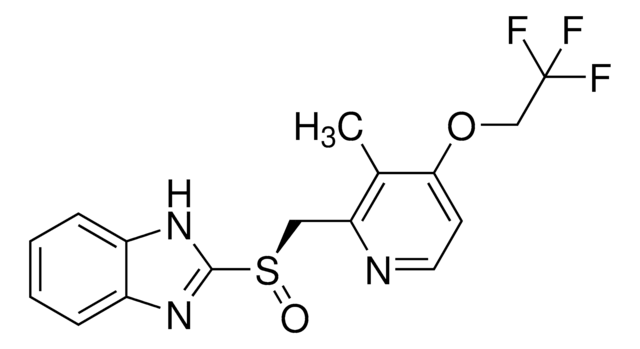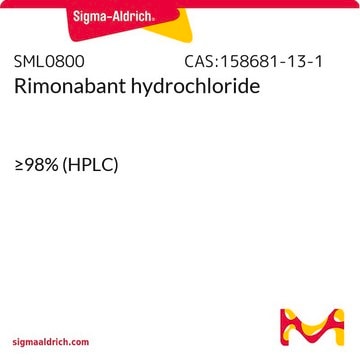B107
L-BMAA hydrochloride
≥97% (NMR), powder
Synonim(y):
S(+)-2-Amino-3-(methylamino)propionic acid hydrochloride
About This Item
Polecane produkty
Poziom jakości
Próba
≥97% (NMR)
Postać
powder
aktywność optyczna
[α]/D +21 to +31°, c = 0.5 M in 0.1 M HCl(lit.)
warunki przechowywania
desiccated
kolor
white to beige
rozpuszczalność
H2O: soluble (solutions may be stored for several days at 4 °C)
temp. przechowywania
−20°C
ciąg SMILES
Cl.CNC[C@H](N)C(O)=O
InChI
1S/C4H10N2O2.ClH/c1-6-2-3(5)4(7)8;/h3,6H,2,5H2,1H3,(H,7,8);1H/t3-;/m0./s1
Klucz InChI
VDXYGASOGLSIDM-DFWYDOINSA-N
Opis ogólny
Zastosowanie
Działania biochem./fizjol.
Kod klasy składowania
11 - Combustible Solids
Klasa zagrożenia wodnego (WGK)
WGK 3
Temperatura zapłonu (°F)
Not applicable
Temperatura zapłonu (°C)
Not applicable
Środki ochrony indywidualnej
Eyeshields, Gloves, type N95 (US)
Certyfikaty analizy (CoA)
Poszukaj Certyfikaty analizy (CoA), wpisując numer partii/serii produktów. Numery serii i partii można znaleźć na etykiecie produktu po słowach „seria” lub „partia”.
Masz już ten produkt?
Dokumenty związane z niedawno zakupionymi produktami zostały zamieszczone w Bibliotece dokumentów.
Nasz zespół naukowców ma doświadczenie we wszystkich obszarach badań, w tym w naukach przyrodniczych, materiałoznawstwie, syntezie chemicznej, chromatografii, analityce i wielu innych dziedzinach.
Skontaktuj się z zespołem ds. pomocy technicznej







